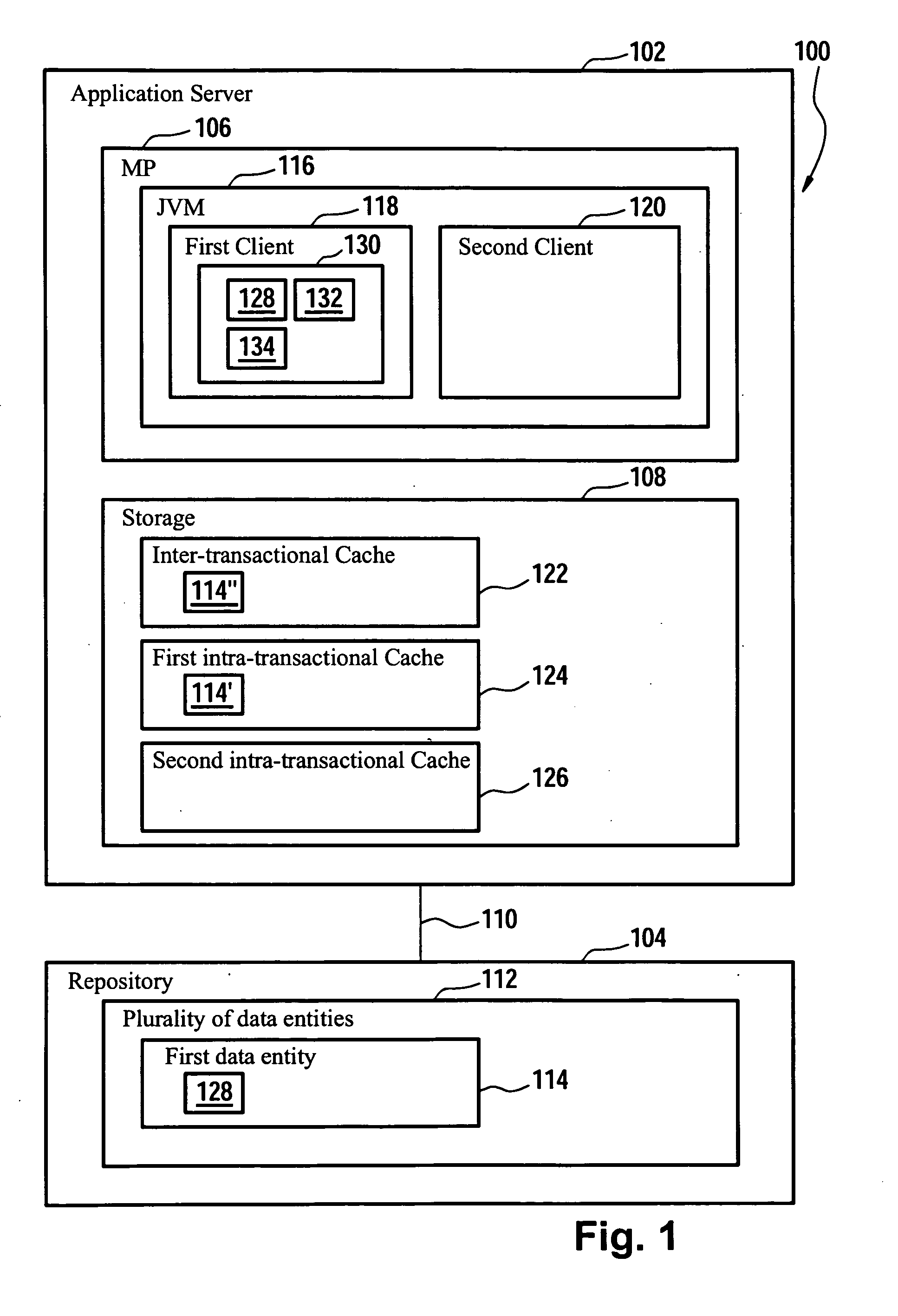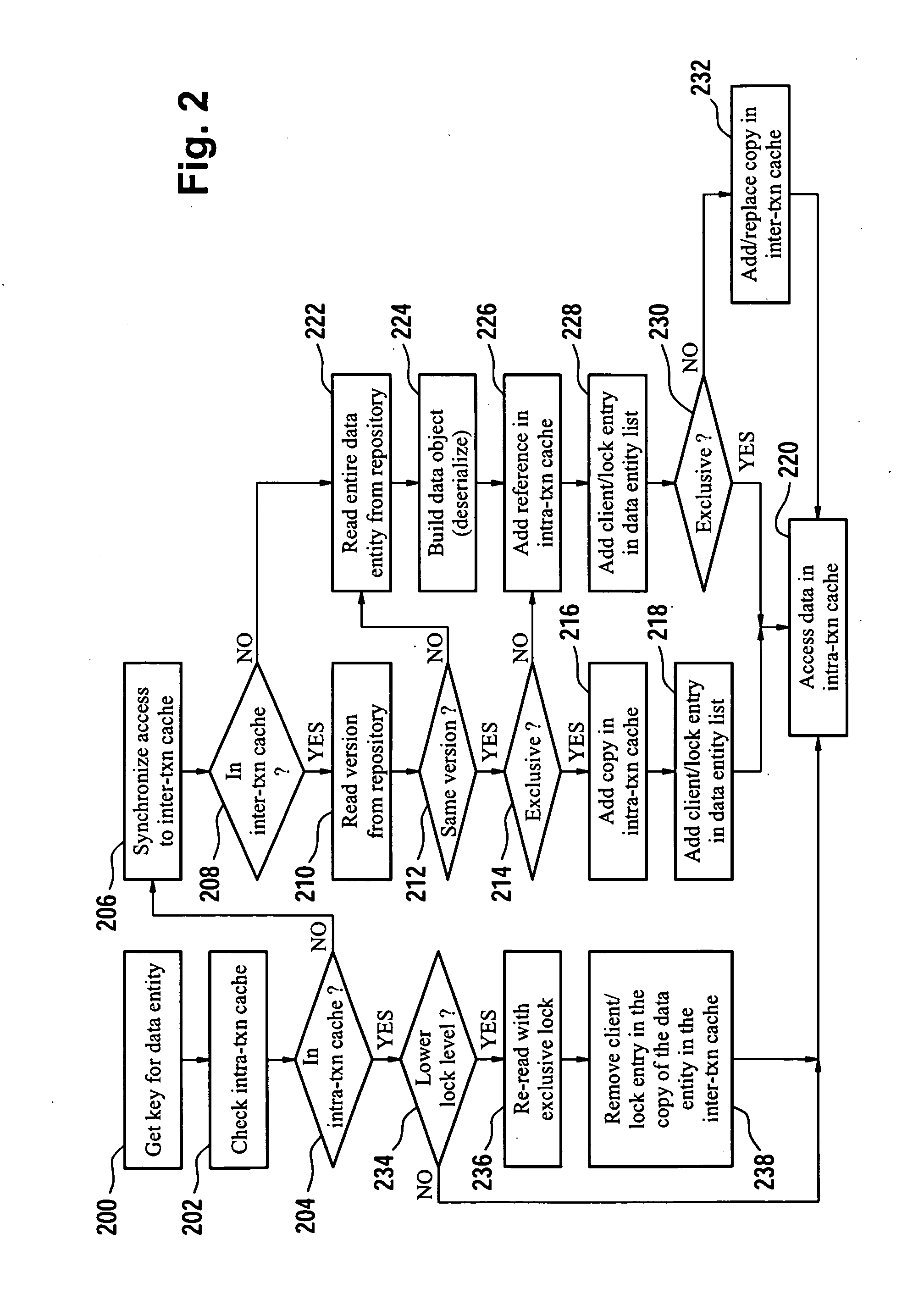Accessing Data Entities
a data entity and access method technology, applied in the field of accessing data entities, can solve the problems of limiting the speed at which current technologies can operate, affecting the processing speed of data entities, and affecting so as to reduce the processing time of data entities and reduce the use of client-server systems
- Summary
- Abstract
- Description
- Claims
- Application Information
AI Technical Summary
Benefits of technology
Problems solved by technology
Method used
Image
Examples
Embodiment Construction
[0060]FIG. 1 shows a block diagram of a client-server system 100. The client-server system 100 comprises an application server and a repository 104. The application server 102 can be regarded as a computer system and comprises a microprocessor and storage 108. The application server 102 and the repository 104 are connected via a communication link 110 which might relate to a network connection. The repository 104 might, of course, also be part of the application server 102.
[0061]The microprocessor 106 executes a so called Java Virtual Machine 116. The Java Virtual Machine (JVM) 116 can be regarded as a set of computer software programs and data structures which implements a specific virtual machine model. This model accepts a form of computer intermediate language, commonly referred to as Java byte code, which conceptually represents the instruction set of a stack-oriented, capability architecture. The code is most often generated by Java language compilers, although the Java virtua...
PUM
 Login to View More
Login to View More Abstract
Description
Claims
Application Information
 Login to View More
Login to View More - R&D
- Intellectual Property
- Life Sciences
- Materials
- Tech Scout
- Unparalleled Data Quality
- Higher Quality Content
- 60% Fewer Hallucinations
Browse by: Latest US Patents, China's latest patents, Technical Efficacy Thesaurus, Application Domain, Technology Topic, Popular Technical Reports.
© 2025 PatSnap. All rights reserved.Legal|Privacy policy|Modern Slavery Act Transparency Statement|Sitemap|About US| Contact US: help@patsnap.com



